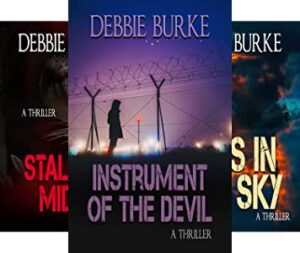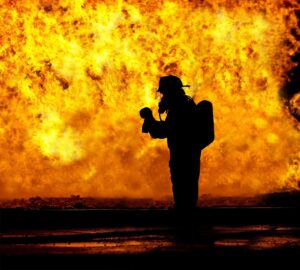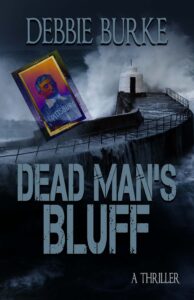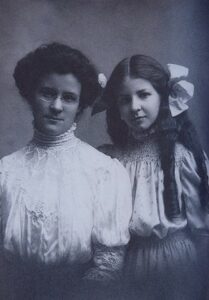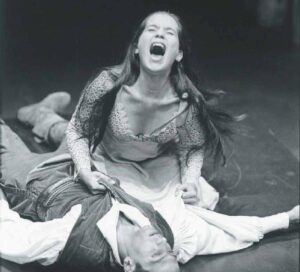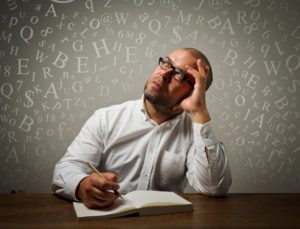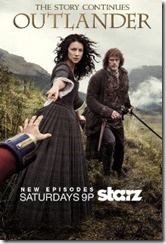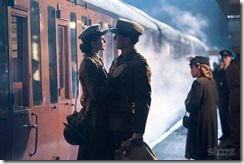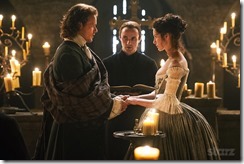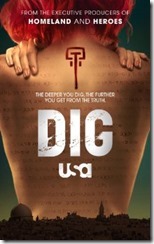 Every character is the hero of their own story. Even the villain.
Every character is the hero of their own story. Even the villain.
We’ve talked many times about the importance of fleshing out characters. This time let’s reframe the narrative for those who may not grasp the finer details of crafting a compelling villain.
It’s easy to tell a fellow writer to slip into the villain’s skin and view the world through their eyes—I’ve given the same advice—but for those who haven’t mastered characterization, it may not be enough.
- How does one craft a killer when they’ve never committed a crime?
- How can we champion a villain’s efforts with no real-world experience?
Sure, we can draw conclusions and make assumptions. Is that enough for readers?
- Is there a way to pull from life experience, to really feel what it’s like to transform into somebody else?
Yes, there is. And it’s called immersion. Method actors use the same technique.
The dictionary defines immersion as “deep mental involvement.” It can also mean engagement, as in a mixture of how much you’re paying attention, how submerged you are in an experience, and how it affects you emotionally.
Immersion, whether real or imagined, taps into fundamental psychological principles like perception, emotional engagement, and the sense of presence. It involves a combination of sensory stimuli, cognitive engagement, and emotional resonance that creates a feeling of being completely absorbed in the experience.
Immersive experiences are rich and complex, drawing upon personal experiences, and engage with emotions through the manipulation of the five senses. They’re described as transformational, intense, sometimes hectic, and provoking.
What we see tells us a lot about the world around us, but what the body experiences is much more powerful.
How we immerse ourselves in a life unlike our own starts with walking in their shoes. Listen to the villain’s favorite music. Eat their favorite foods. View the world through their eyes.
- What’s their culture like?
- What’s their theme song?
- What’s their religion, politics, and views on other hot topics?
- Do they like the rain? Cold weather? Scorching hot sun?
- Are they happy with where they live? Or have they been trying to escape the area for years?
- What do they do for a living? Do they have buddies at work?
- Are they body conscious and drink water all day? Or do they drink black coffee till noon, then switch to scotch?
- Do they smoke? I’m not proposing you start smoking but you can pretend.
Even if the character’s actions rub against your values and beliefs, you must find at least one redeeming quality, or at least be able to empathize with a part of them.
Take Ed Kemper, for example. His mother was a severe alcoholic who favored his two sisters and never missed the chance to belittle him. Ed’s father, a World War II veteran, hated his wife. The couple divorced when Ed was still in grammar school.
Living with his mother was no picnic. She locked him in the cellar for days and/or weeks at a time—alone—a bare lightbulb hanging from a wire in the center of the dark and creepy space. Since the door locked from the outside, the only way out was through a trap door beneath the dining room table.
Trapped, Ed lay on the cold cement floor staring into the flame of the furnace. And it was then, he later told an FBI profiler, he saw the face of the Devil for the first time. That period of his life exacerbated his already fractured mind.
Later, at age 14, his father sent him to live with his grandparents in California. Interestingly, Maude (grandmother) was an extra in Gone with the Wind and a writer for Redbook McCall’s. Even so, Ed hated living there, calling his grandfather “senile” and his grandmother, well, this is how he described her…
“She thought she had more balls than any man and was constantly emasculating me and my grandfather to prove it. I couldn’t please her. It was like being in jail. I became a walking time bomb, and I finally blew.”
And blew he did, with the murder of his grandparents. Authorities sent him to Atascadero State Hospital, a maximum-security facility where doctors subjected him to various tests. One of which illuminated his genius IQ. They also diagnosed him as a paranoid schizophrenic.
In the six years he spent at the institution, he became one of the doctors’ favorite patients. They even allowed him to assist in conducting tests on other inmates, until 1969 when they released him into his mother’s care.
Big mistake. At 6 ft. 9 inches tall and 250 pounds, Ed was a mammoth with a genius IQ and a rage inside him.
After killing and decapitating six young women, he finally turned his wrath on Mother—the true source of his hatred—murdering, decapitating, and using her head as a dartboard. He also tore out Mother’s vocal cords and shoved them down the garbage disposal. When the disposal spat the gristly innards back out, he said to himself,
“That seems appropriate as much as she’d bitched and screamed and yelled at me over so many years.”
With his personal monster dead, Ed turned himself into police. He had no reason to kill anymore. He’s lived at California Medical Facility in Vacaville ever since. As a model inmate, he’s allowed to work as an audiobook narrator.
If Ed Kemper was a fictional villain, how would you make him the hero of his own story?
We’d need to focus on the abused little boy, alone and frightened, that still cried inside him and the personable guy who doctors adored. Does that mean I agree with what he did? Absolutely not. But as writers, we must find a way to justify his actions. We must. Otherwise, the villain will fall flat.
Now, don’t tell the reader what redeeming qualities you clung to while writing. Show them a tidbit here and there—just enough to pique curiosity and drive the plot—that make him feel more human. Or let the hero figure it out on their own.
If the villain is a series character, only reveal enough to intrigue and drive the plot. I did this with my serial killer named Mayhem. In three books, I showed him as a merciless serial killer. I also showed his love of animals, especially his sidekick Poe, the crow, and how tender he could be when caring for a wife stricken with ALS and his close relationship with his daughter and grandson.
Mayhem loves fine wine and is an expert chef, but he’s offended by bad language and numerous other things, especially rapists, cannibals, and child killers. Readers fell in love with Mayhem. Deeply in love. So much so, I had to transform him into an antihero in later books.
Readers understand, even champion, why he kills.
We did the same with Dexter. Who didn’t love to watch him murder other serial killers? Genius on Lindsay’s part.
Find a different angle for your villain. Copycats aren’t unique or memorable. Villains are some of the most difficult characters to craft because they do bad things. I also find villains and antiheroes the most rewarding to write.
The next time you craft a character vastly different from yourself, try immersion. It works for the entire cast, including heroes, sidekicks, foils, secondary characters, etc.




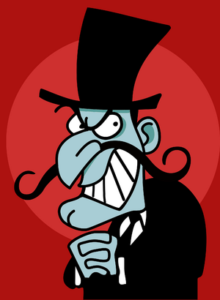

 Characters need personal growth to achieve their goals. If the character seeks to improve themselves in some way — at work, in relationships, or spiritually — or defeat the villain, their fatal flaw will often sabotage early efforts.
Characters need personal growth to achieve their goals. If the character seeks to improve themselves in some way — at work, in relationships, or spiritually — or defeat the villain, their fatal flaw will often sabotage early efforts.

